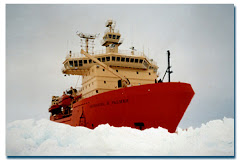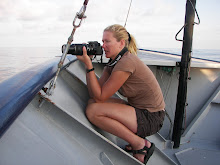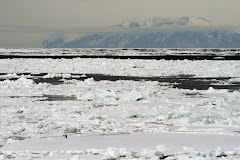
Saturday, May 9, 2009
Sampling season 2009 is underway!
Hello,
It has certainly been a busy winter and spring as the results of our 2008 season are still being analyzed. Hundreds of thousands of zooplankton have been counted and countless Excel graphs have been created. Our 2008 sampling season, however, is only one half of the picture. Data to be collected this year (from May through October) will add to our knowledge of ctenophores and other gelatinous zooplankton in Long Island estuaries. Last year at this time, we experienced a very large brown tide bloom, which likely had a large impact on the plankton dynamics in Great South Bay. Brown tides disrupt the normal ecosystem of marine environments by crowding out other, more nutritious algal species, diminishing the available food for zooplankton and benthic suspension feeders, such as clams and scallops. Brown tide also blocks out light available to the submerged aquatic vegetation resulting in large die-offs of eelgrass in Long Island waters. Although brown tide may not affect ctenophores such as Mnemiopsis leidyi directly, the impact on lower portions of the food web eventually impact the ability of larval and adult Mnemiopsis to feed efficiently and may have offset the timing of the 2008 M. leidyi bloom.
This year, our sampling season began on a cool, cloudy morning, but the waters of Great South Bay were clear with a tinge of green, and full of Acartia copepods - a good food source for M. leidyi. It will be interesting to see when M. leidyi blooms (in abundance) this year since the predatory ctenophore Beroe ovata came in towards the end of the summer and virtually wiped out M. leidyi from our sampling stations in Great South Bay. Since adult M. leidyi over-winter in the bay and serve as a source population for the ctenophore summer bloom, M. leidyi may reach peak abundance later in the season compared to years when B. ovata (which is an oceanic species) has entered the bay the season before.
The water is a cool 13.5 degrees (Celcius) and warming quickly. Our field experiments will soon be underway and I have a new team of eager undergraduates who will be assisting in the project this summer. So stay tuned!!!
It has certainly been a busy winter and spring as the results of our 2008 season are still being analyzed. Hundreds of thousands of zooplankton have been counted and countless Excel graphs have been created. Our 2008 sampling season, however, is only one half of the picture. Data to be collected this year (from May through October) will add to our knowledge of ctenophores and other gelatinous zooplankton in Long Island estuaries. Last year at this time, we experienced a very large brown tide bloom, which likely had a large impact on the plankton dynamics in Great South Bay. Brown tides disrupt the normal ecosystem of marine environments by crowding out other, more nutritious algal species, diminishing the available food for zooplankton and benthic suspension feeders, such as clams and scallops. Brown tide also blocks out light available to the submerged aquatic vegetation resulting in large die-offs of eelgrass in Long Island waters. Although brown tide may not affect ctenophores such as Mnemiopsis leidyi directly, the impact on lower portions of the food web eventually impact the ability of larval and adult Mnemiopsis to feed efficiently and may have offset the timing of the 2008 M. leidyi bloom.
This year, our sampling season began on a cool, cloudy morning, but the waters of Great South Bay were clear with a tinge of green, and full of Acartia copepods - a good food source for M. leidyi. It will be interesting to see when M. leidyi blooms (in abundance) this year since the predatory ctenophore Beroe ovata came in towards the end of the summer and virtually wiped out M. leidyi from our sampling stations in Great South Bay. Since adult M. leidyi over-winter in the bay and serve as a source population for the ctenophore summer bloom, M. leidyi may reach peak abundance later in the season compared to years when B. ovata (which is an oceanic species) has entered the bay the season before.
The water is a cool 13.5 degrees (Celcius) and warming quickly. Our field experiments will soon be underway and I have a new team of eager undergraduates who will be assisting in the project this summer. So stay tuned!!!
Subscribe to:
Posts (Atom)


.jpg)




